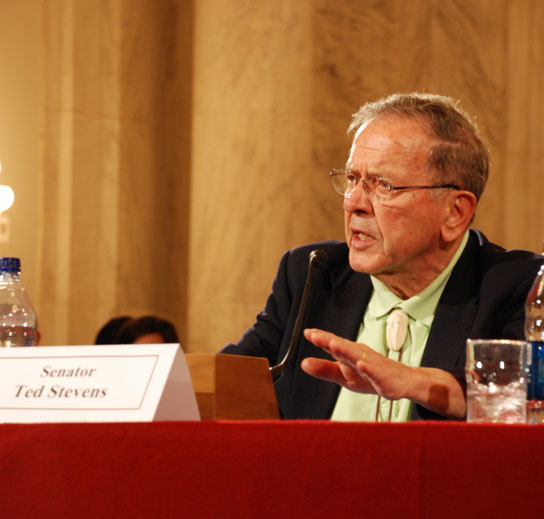Senator Stevens served as a United States Senator for Alaska from December 1968 until January 2009, at which time he had served longer than any other United States Senator of his party in history. Born in Indiana and raised in California, he adopted Alaska as his home in the early 1950s. Virtually his entire career was dedicated to public service. He served with distinction in the Army Air Corps during the Second World War as a pilot in the China Burma India Theater and was awarded two Air Medals for his service. After leaving the service, Stevens finished college and attended law school. Shortly after graduating, Stevens became a U.S. Attorney in Fairbanks, Alaska. He then worked in the Interior Department during the Eisenhower administration, where he served as Legislative Counsel and Solicitor of the Department of the Interior. He was active in the battle for Alaska statehood and in 1961, he returned to Alaska. In 1964 he was elected to the Alaska State House and was chosen by his peers to serve as majority leader. In 1968, Stevens was appointed to the United States Senate by then Governor Walter J. Hickel to fill the vacancy created by the death of Senator E.L. (Bob) Bartlett.
In the Senate, Stevens served as a strong advocate for Alaska. He battled to resolve the native land claims issue, for construction of the Alaska Oil Pipeline, to protect Alaska’s fishing industry, and for infrastructure for the growing state. He championed the rights of local people to control their destiny and he worked tirelessly to improve health care and living conditions for residents of the young state. On behalf of the nation, Stevens also promoted national security, worked to strengthen our military with modern weapons, new facilities, and improved pay and benefits. He helped foster the growth of new communications technology and improvement in air, road, and rail service. Ted Stevens was a strong supporter of amateur sports, especially for women. Stevens wrote the Amateur Sports Act, which reorganized the Olympic movement in the United States. He co-authored the Magnuson-Stevens Act, which led to the adoption of the 200-mile limit and numerous acts that restructured and revitalized the American fishing industry.



